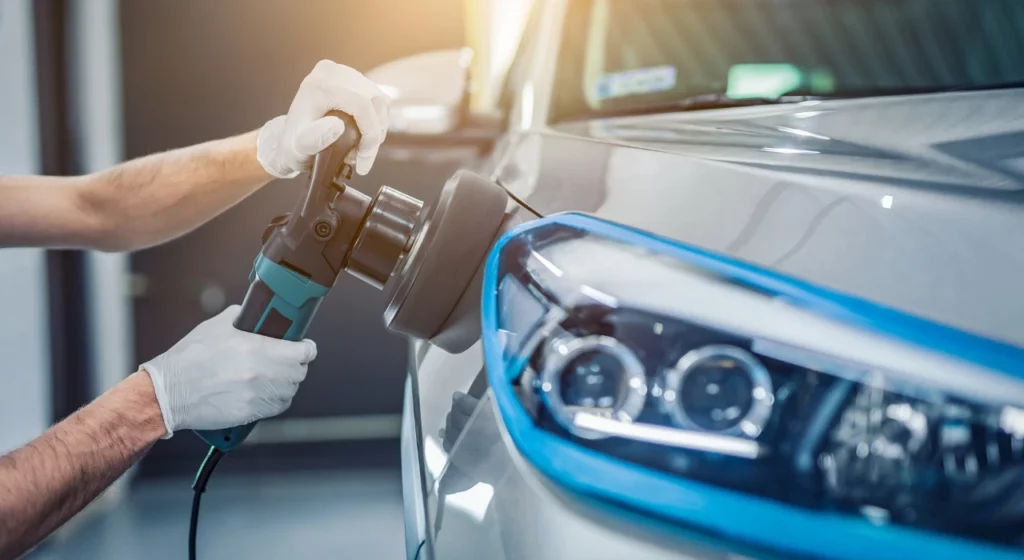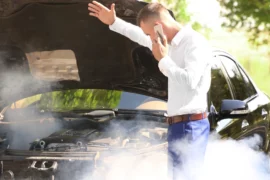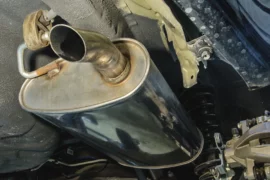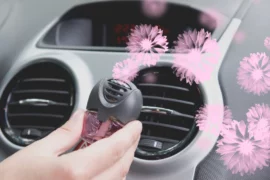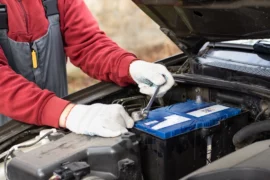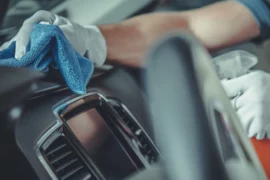It can be costly and stressful to get your car fixed after an accident or damage. You have spent a lot of money to get your car back to the way it was when you bought it. You don’t want to ruin that new repair work by cleaning it the wrong way.
Many people who own cars make costly blunders when they clean them after body work because they don’t know that the ahparts that were just fixed need extra care and attention.
When you pick up your automobile from the shop, it might appear wonderful, but to keep it that way, you need to know the best ways to clean a car after a body repair or how to clean it properly.
Every part needs to be handled carefully during the first cleaning time, from fragile paint surfaces to new parts. Knowing the appropriate way to do things can help you protect your investment and keep your automobile looking like new for a long time.
Why is Cleaning after Body Repair Important?
Your car has just had a lot of work done to make it look and work better. Nepaint, replacement parts, sealants, and other materials that need time to settle and cure properly are all part of the restoration process. Your car needs to be handled with care during this time of weakness to avoid hurting the new repair work.
New Repairs Need Gentle Care
Areas that have just been fixed are more sensitive than areas that have been there for a while. New paint hasn’t completely dried yet, new parts might have protective coatings, and sealants surrounding panels require time to dry completely. Harsh cleaning procedures or abrasive materials can hurt these delicate surfaces, which can make them wear out faster, change colour, or even fail.
Keeping Your Investment Safe
Repairing the body of your car is a big financial commitment. Using the right cleaning car methods can help ensure that your investment pays off by keeping the repairs looking good and working well. If you don’t clean properly, you could cause damage that needs extra repairs, which means you wasted your original investment and have to pay more.
When to Start Cleaning After Body Repair?
When you clean your car after body work, timing is quite important. If you start too soon, you could hurt something. If you wait too long, dirt and other things could build up and cause difficulties. Knowing when to do maintenance helps maintain your car clean and looking good while also protecting it.
Suggestion: Top Vehicles For A Family Of 5 With High Safety And MPG.
Guidelines for the Waiting Period
Most repair companies say you should wait at least 30 days before cleaning your car routinely. During this time, the paint can dry and the other components can set entirely. But the actual timing can change based on the kind of repair work done, the weather, and the specific materials utilised for the repairs.
Ask Your Repair Shop
Before you start cleaning, always talk to your repair shop first. They can provide you with precise advice depending on the work that was done on your car and the parts that were used. Some repairs could take longer than intended, while others might be ready for a light cleaning sooner than thought.
How to Clean Your Car After a Body Repair?
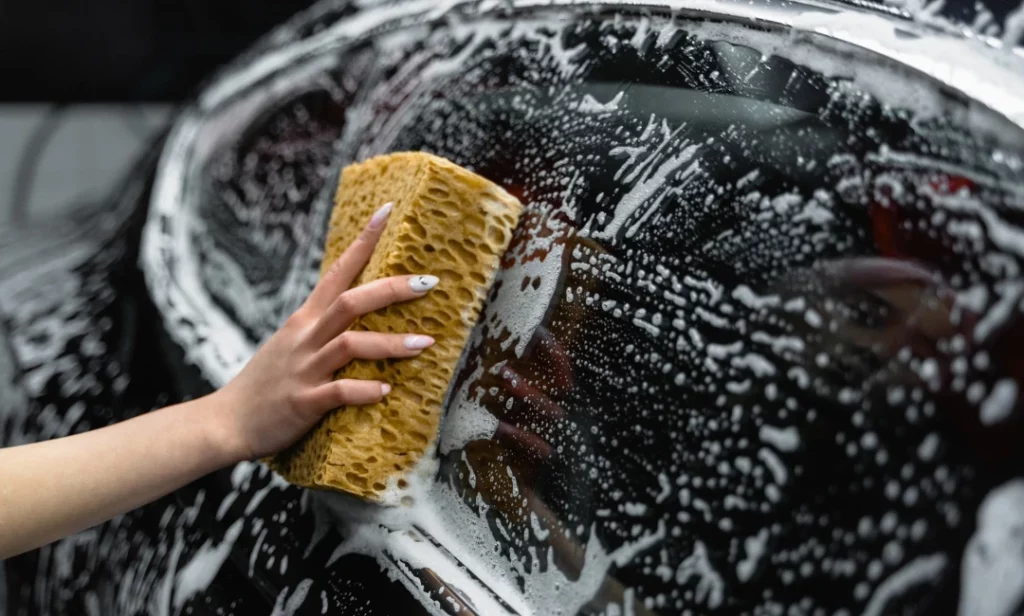
When you clean your car after bodywork, you need to be careful and use the right tools. The goal is to get rid of dirt and other things without hurting the new repair work or lowering the quality of the restoration.
1. Exterior Cleaning Techniques
After getting your car fixed, the safest way to clean it is by hand. To keep water spots from forming, use cool water and operate in the shade. Begin from the top and work your way down, rinsing often to get rid of soap and grime. Don’t use high-pressure cleaning or automatic car washes that use rough brushes or chemicals.
2. Interior Cleaning Methods
Cleaning the inside of a car after bodywork is done is mostly about getting rid of dust and other things that may have built up during the repair process. Use a soft vacuum to get rid of dirt that is loose dirt on carpets and furniture. Use mild cleaners made for cars to clean the inside of the car. Don’t use harsh chemicals that could harm the trim or upholstery.
3. Cleaning Supplies You Need
- PH-neutral car wash soap made just for cars
- Soft microfiber wash mitts and cloths
- Several gallons of clean water for rinsing
- A dashboard and trim cleaner that is gentle
- Soft bristle brushes for cleaning in detail
- Use clean microfiber or chamois towels to dry off.
- A light cleaner for windows and mirrors
4. Step-by-Step Cleaning Process
- Start by cleaning the whole car with lukewarm water to get rid of any dirt and debris that is loose.
- Follow the manufacturer’s directions to make your cleaning solution, and use less soap instead of more.
- Start at the top and work your way down, washing one part at a time.
- Before going to the next area, make sure to rinse each one well.
- Use clean, soft towels to dry the car all the way through to avoid water marks.
Areas That Need Special Attention
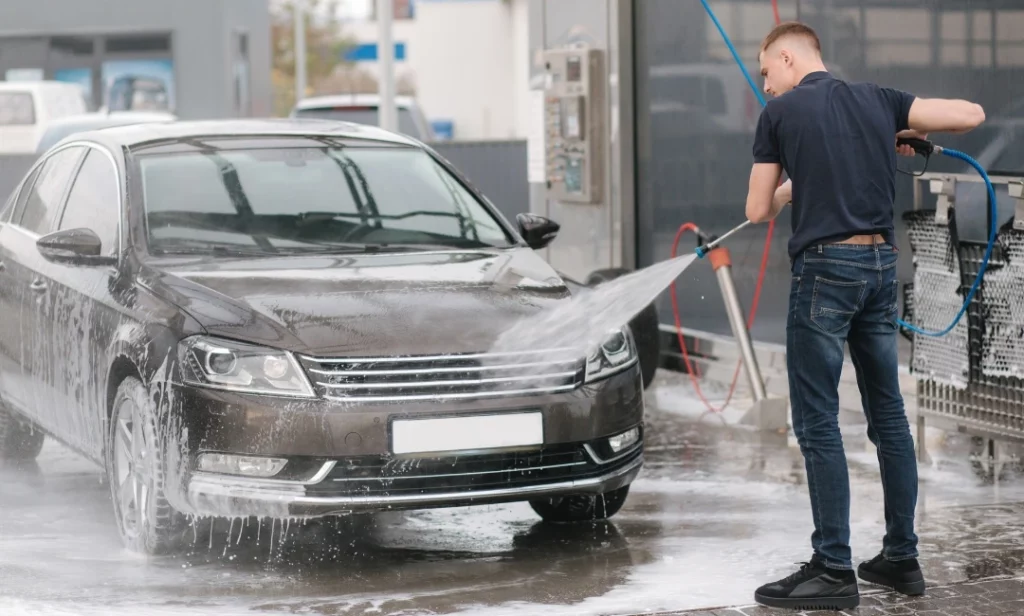
When you clean your car, you need to pay additional attention to some parts of it. These are usually the places where repairs were made or new materials were used throughout the restoration process.
Also Check: Explore 2025 Ford SUVs That Offer Top Gas Mileage.
Repaired Body Panels
When cleaning, take care with body panels and get a car inspection to ensure that they have been fixed or replaced. New paint, sealants, or parts that are more sensitive than the original surfaces may be present in these places. When cleaning these areas, be extremely careful and use the least amount of pressure and the gentlest cleaning methods you can.
Newly Painted Surfaces
Cleaning fresh paint needs extra care. Don’t scrub or put pressure on painted surfaces because the paint might not be entirely dry yet. Instead of using physical force, let the cleaning solution do the work by using soft cloths and gentle motions.
Replaced Parts and Components
New parts and components could have protective coatings or treatments that need to be handled with care. These items might not fit the same way as the original parts, leaving new gaps or seams where dirt can build up. When you clean, pay special attention to these areas to make sure you get rid of dirt and other things without hurting them.
Suggestion: Does Airbag Deployment Automatically Mean the Car Is Totaled?
Things You Shouldn’t Do While Cleaning
Many people who own cars accidentally ruin their new paint jobs by employing the wrong cleaning procedures or products. Knowing these frequent blunders can help you avoid expensive damage and keep your repairs in good shape.
1. Rough Ways to Clean
Don’t use high-pressure washers, automatic car washes, or rough scrubbing methods on your newly fixed car. These procedures can harm fragile surfaces, take off protective coatings, or make repair materials wear out too quickly. Use mild hand-washing methods that don’t put too much stress on the places that were fixed.
2. Tools and Products that Aren’t Right
Don’t ever use dish soap, laundry detergent, or other cleansers around the house on your car. These compounds are too strong for car surfaces and can ruin paint and trim for good. Also, don’t use old rags, paper towels, or scratchy cloths that could scratch delicate surfaces.
You May Also Like: Learn How TPMS Works And What It Tells You About Your Tires.
Conclusion
Cleaning up properly after body repair is important to protect your investment and maintain the quality of the restoration job. You can make sure that your automobile looks and works like new by following these tips for cleaning it after a body repair. Keep in mind that being patient and using gentle methods are important for keeping new repairs in good shape.
If you take the time to clean your car well, you will enjoy the benefits of your repair expenditure for many years to come. If you’re not sure what to do, ask your repair shop for advice that is particular to your car and the work that was done.
FAQ’s
When can I wash my car after getting body work done?
Don’t wash your car routinely for at least 30 days. Ask your repair shop for particular advice based on the work that was done.
Can I wash my car with an automatic car wash after body work?
Don’t use automatic car washes for at least three months after getting your automobile fixed. The brushes and chemicals used might hurt new paint and soft surfaces.
What cleaning supplies are safe to use on fixed areas?
Only use car wash soaps that are pH neutral and made for cars. Don’t use harsh chemicals, dish soap, or cleaners for the home.
How do I clean the interiors after fixing the body?
Use soft vacuuming methods and mild cleansers for the inside of your car. Stay away from harsh chemicals and too much moisture, which can harm trim or upholstery.
Should I wax my automobile right after I fix it?
Let the paint dry completely before putting on wax or finish. This can take up to three months. Waxing too soon can hurt the finish.

